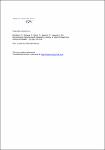Noninvasive monitoring of respiratory viruses in wild chimpanzees.
Köndgen, Sophie
Schenk, Svenja
Pauli, Georg
Boesch, Christophe
Leendertz, Fabian
To diagnose respiratory disease among wild great apes, there is a need for noninvasive diagnostic methods. Therefore, we analyzed fecal samples from habituated chimpanzees from Taï National Park, Côte d'Ivoire. Samples had been collected during four distinct outbreaks: two with known aetiology (March 2004 and February 2006) and two with unknown aetiology (October 2004 and August 2005). Fecal samples were screened by polymerase chain reaction (PCR) for the presence of human metapneumovirus (HMPV) and human respiratory syncytial virus (HRSV), two paramyxoviruses previously found in lung tissue of chimpanzees that died due to respiratory disease. In the March 2004 outbreak, 72% of the tested individuals were positive for HMPV, and during the 2006 epidemic, 25% tested HRSV-positive. In the outbreaks where no causative pathogen was previously known, fecal samples tested positive for either HRSV or HMPV, showing that reinfection occurred. Virus sequences were generated and compared with sequences previously found in tissue; nearly identical virus sequences in both tissue and fecal samples were found. These results demonstrate that fecal samples collected during outbreak times can be used for the diagnostic and phylogenetic analysis of HMPV and HRSV. Using such diagnostic tools, systematic noninvasive disease investigation of respiratory outbreaks in wild great apes becomes possible. The methods presented here may also be applied for the investigation of further acute diseases in great apes and other species.
Dateien zu dieser Publikation
Keine Lizenzangabe

